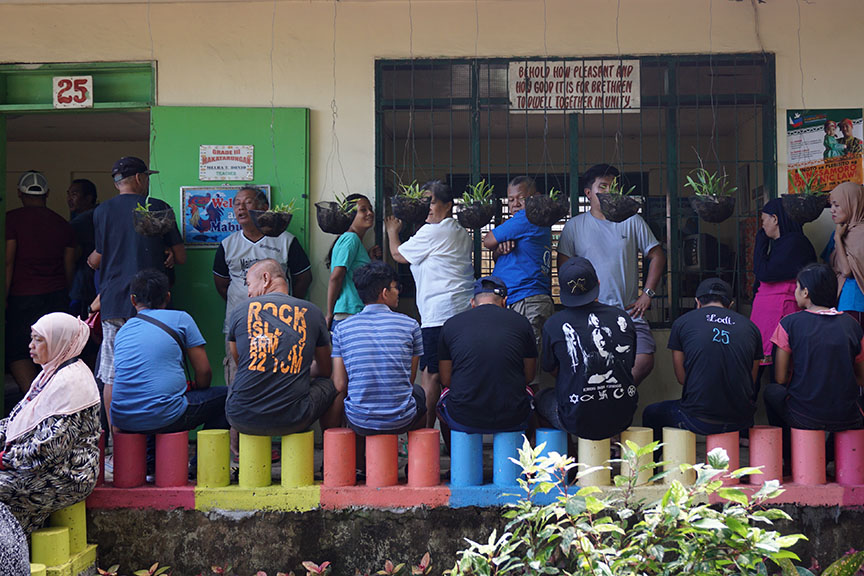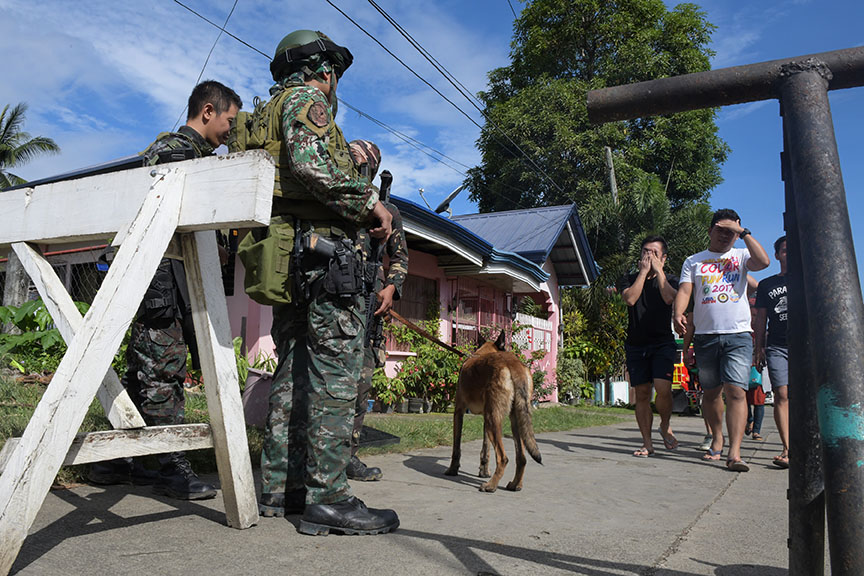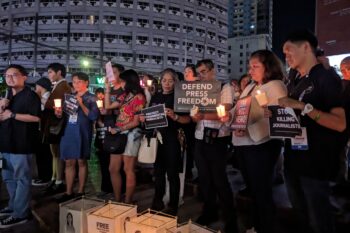 Residents in Kauswagan, Lanao del Norte wait for their turn to vote during the plebiscite on February 6, 2019. MindaNews photo by BOBBY TIMONERA
Residents in Kauswagan, Lanao del Norte wait for their turn to vote during the plebiscite on February 6, 2019. MindaNews photo by BOBBY TIMONERA
DELABAYAN, Kauswagan, Lanao del Norte (MindaNews/22 February) — This small community is still trying to overcome lingering fears caused by armed conflict and are hoping for a better future.
Eighteen years after ousted president Joseph Estrada’s all-out war in 2000 against the Moro Islamic Liberation Front (MILF), residents here still remember in vivid detail how their houses were burned and how they spent days in the jungle as the conflict raged.
Ustadz Nash Manalao, 64, recalled the agony and hardship he and his family went through during the 2000 war.
“My house in Kauswagan was burned down along with other houses,” Manalao narrated.
He said what was sad was that the soldiers made sure the houses they burned belonged to Maranaos.
He said houses owned by the Christians in Kauswagan poblacion were spared from burning.
Manalao said faced with certain death if they stayed in Kauswagan, he and his family along with other Maranao families fled on foot to this hinterland village.
He said they survived by eating root crops as they evaded the soldiers who pursued the MILF rebels.
“There were times that I wanted to fight back but I did not,” Manalao, who chairs the Moro National Liberation Front (MNLF) in Lanao del Norte, said.
“The MNLF and the Philippine government had already signed a peace agreement in 1996. The 2000 war was between the MILF and government. It was not our war,” he said.
2008 attack
Almost 10 years after MILF rebels attacked her village in Kolambogan town, Jocelyn Maglangit, 51, said she has yet to overcome her fears.
Maglangit said she and her neighbors fled to Ozamiz City during the plebiscite on the inclusion of six towns in Lanao del Norte last Feb. 6.
“The attack by the MILF rebels on our town in 2008 was still fresh in my mind,” she said.
 Soldiers and policemen with a bomb-sniffing dog check on residents coming to vote at the Kauswagan Central Elementary School in Lanao del Norte. MindaNews photo by FROILAN GALLARDO
Soldiers and policemen with a bomb-sniffing dog check on residents coming to vote at the Kauswagan Central Elementary School in Lanao del Norte. MindaNews photo by FROILAN GALLARDO
Hundreds of MILF guerrillas attacked the towns of Kolambugan and Kauswagan in August 2008, burning homes, raiding banks and forcing thousands to flee.
The attacks, which also happened in Southwestern Mindanao, came after the Supreme Court rejected the Memorandum of Agreement on Ancestral Domain signed by the MILF and the government in Kuala Lumpur, Malaysia.
Maglangit recalled the rebels came in the morning, firing their guns into the air, forcing them to flee.
She said those who were not able to flee were taken hostages and used as human shields by the rebels when they withdrew to the mountains a day later.
“I carried my baby all the way to the beach Kolambugan,” she said.
She said she found herself with thousands of residents who were also running away from the fighting.
Maglangit said she boarded a leaking boat that took her across Panguil Bay to Clarin town.
“I was desperate to flee. All of us in the boat were praying that it would not sink,” she said.
That dreadful experience, Maglangit said, was the reason why she fled again last Feb. 6 after it was rumored that the MILF will again attack Kolambugan.
“I hope all this will come to an end. My children deserve a life of peace,” she said.
On Friday in Malacanang, President Rodrigo Duterte administered the oath-taking of the 80-member Bangsamoro Transition Authority, which will govern the Bangsamoro region until the holding of regular elections in 2022.
The Organic Law for the Bangsamoro Autonomous Region in Muslim Mindanao was ratified in a plebiscite held last January 21 and February 6.
Aside from the current Autonomous Region in Muslim Mindanao which voted as one geographic entity during the plebiscite, the BARMM includes Cotabato City which rejected the ARMM in previous plebiscites, and 63 of 67 barangays in North Cotabato which were proposed for inclusion.
Lanao del Norte rejected the inclusion of six of its towns in the Bangsamoro.
Since the early 1970s, the war in Mindanao had claimed at least 120,000 lives – soldiers, rebels and civilians combined.
The economy of Mindanao was not spared. The Office of the Presidential Adviser on the Peace Process estimated total economic losses due to the conflict at P640 billion. (Froilan Gallardo/MindaNews)
